Union Chain Bridge: Scotland-England link's future secured
- Published
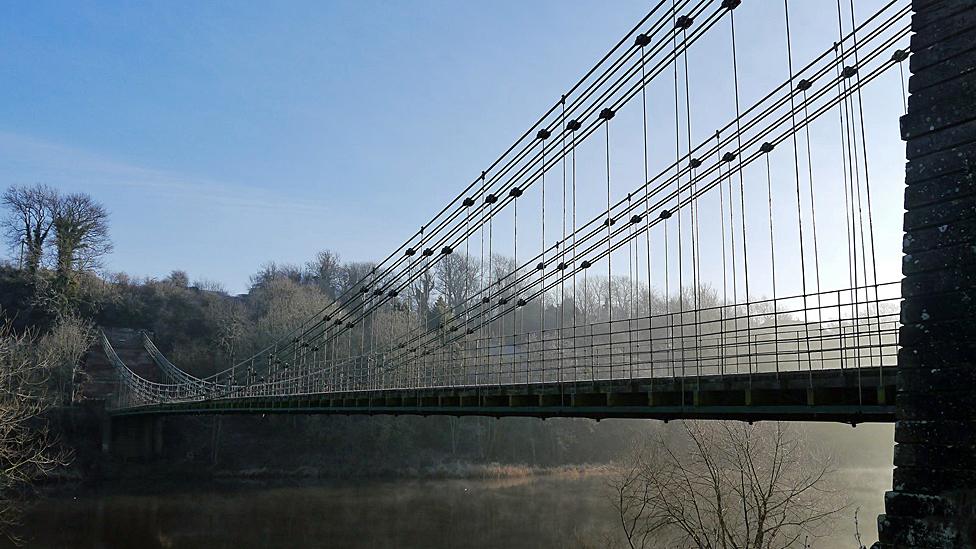
The Union Chain bridge is credited with being a "catalyst for innovation" in bridge design around the world
The future of the oldest suspension bridge in the world still carrying traffic has been secured.
The Union Chain Bridge between Scotland and England - which is almost 200 years old - has received £3.14m from the National Lottery Heritage Fund (NLHF).
It will allow a major programme of repairs to begin next year on the structure over the River Tweed.
Councils on either side of the border have also committed more than £3m towards the scheme.
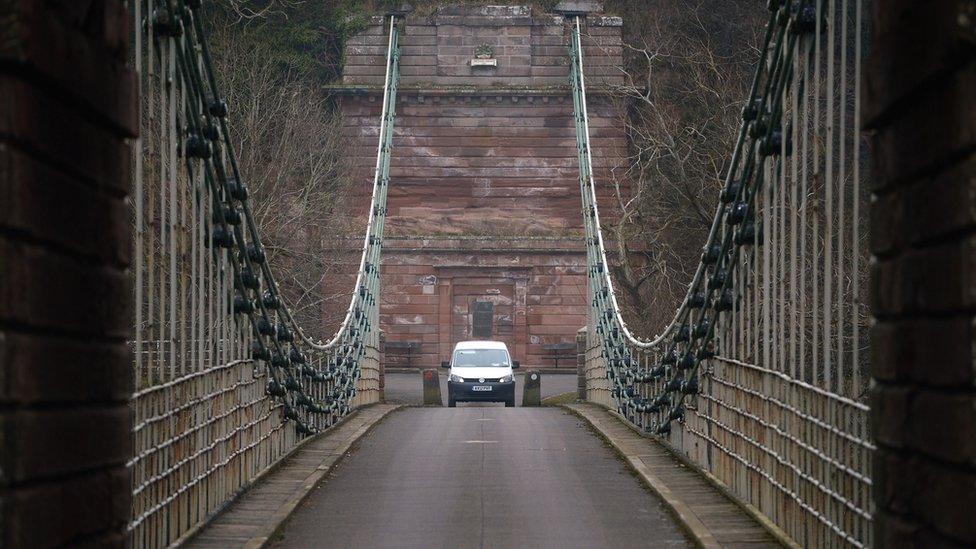
In addition to the repairs, a programme of activities is also planned to celebrate and explore the bridge's historical and engineering importance in order to boost tourism.
It is credited with being a "catalyst for innovation" in bridge design around the world.
The funding success is being marked by a visit to the bridge by the Duke of Gloucester.
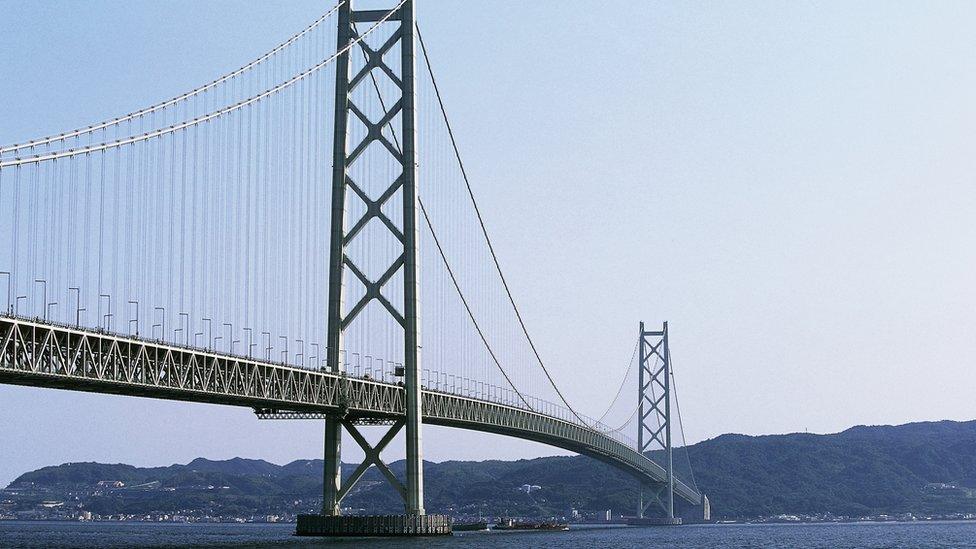
The Akashi-Kaikyo bridge in Japan is the longest cable suspension bridge in the world
The bid was put together by Northumberland County Council (NCC), Scottish Borders Council (SBC), Museums Northumberland and community group Friends of the Union Chain Bridge, following serious concerns about the condition of the famous structure.
The bridge crosses the River Tweed from Fishwick in Berwickshire to Horncliffe in Northumberland.
It was completed in 1820 and was the longest suspension bridge in the world at the time.
It is now understood to be the oldest operational suspension bridge in the world still carrying vehicles.

'Iconic structure' saved
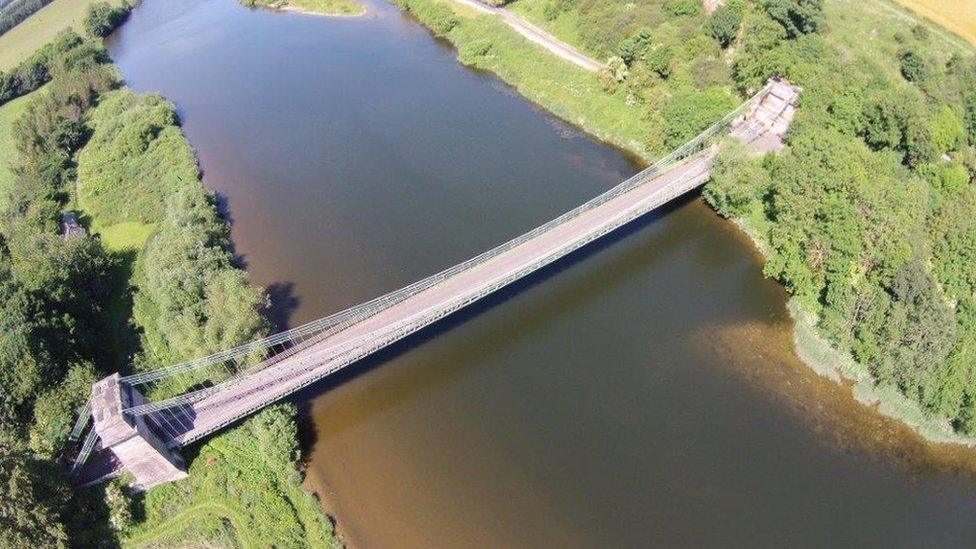
NLHF director David Renwick said: "Not only have national lottery players secured the future of the iconic structure that is the Union Chain Bridge, but the money they have raised will also strengthen connections between communities in Northumberland and the Scottish Borders."
Glen Sanderson, NCC's cabinet member for environment and local services, said: "This bridge is known and loved, not just locally, but nationally and internationally and we've had support from across the world since we started on this submission."
SBC executive member for roads and infrastructure Gordon Edgar said: "Not only is the future of the bridge now secured, but our partnership project will now take forward a number of initiatives which will aim to bring numerous culture, heritage and community benefits, and could prove a catalyst for the local tourism industry."
Robert Hunter, who chairs the Friends of the Union Chain Bridge, said: "Together with our other funders we are not only going to restore the bridge but deliver a really exciting project of community events, which will allow all of us to be incredibly proud of this great structure."
Rowan Brown, chief executive of Museums Northumberland, said: "We will use it as the catalyst for embedding science, technology, engineering and mathematics (Stem) and heritage skills across our communities on both sides of the border."

The bridge's story
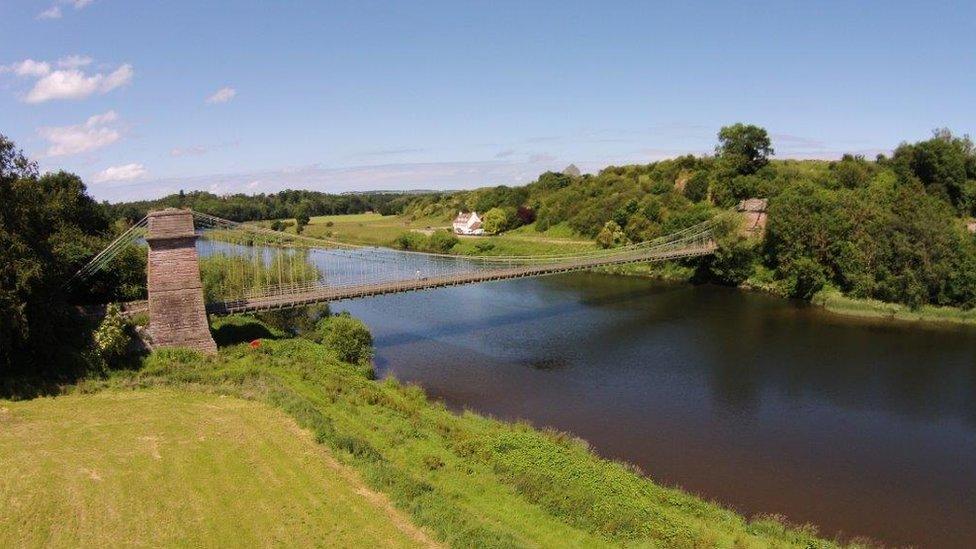
The bridge across the River Tweed is nearly 200 years old
The Union Chain Bridge was built by retired naval captain Samuel Brown and completed in 1820.
It cost about £7,700 to construct and replaced a "perilous ford" slightly downstream.
Although work on Thomas Telford's Menai Bridge started before it, it was the Union Bridge which was completed first, making it the longest iron suspension bridge in the world when it opened.
Hundreds of spectators - including civil engineers Robert Stevenson and John Rennie - turned out to see it open on 26 July.
Until the 1970s it existed with little maintenance but the entire deck was replaced in 1974.
Without "major attention" since then, the cost of refurbishment eventually ran into millions of pounds but should now be able to go ahead.
Source: Friends of the Union Chain Bridge
- Published22 March 2019
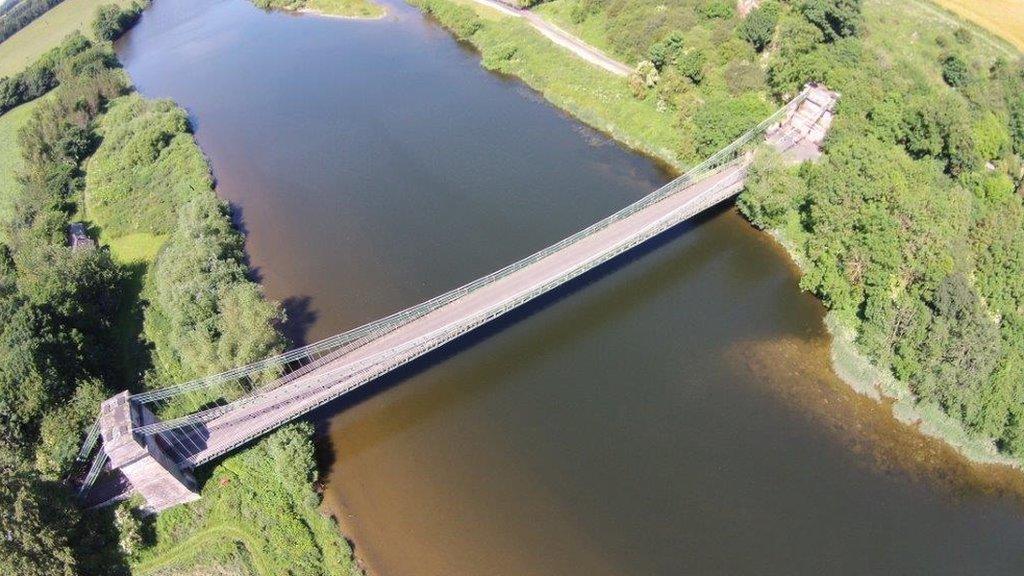
- Published4 March 2019

- Published10 September 2018
